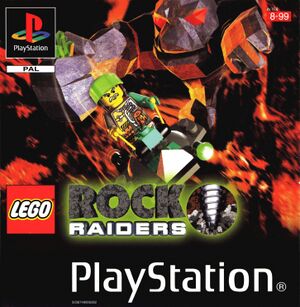LEGO Rock Raiders (PlayStation video game)
From Research Realm
| LEGO Rock Raiders | |
|---|---|
 European front cover | |
| Developer(s) | Data Design Interactive |
| Publisher(s) | LEGO Media International |
| Producer(s) |
|
| Programmer(s) |
|
| Artist(s) |
|
| Platform(s) | PlayStation |
| Mode(s) | Single-player, multiplayer |
LEGO Rock Raiders is a 1999 video game.

